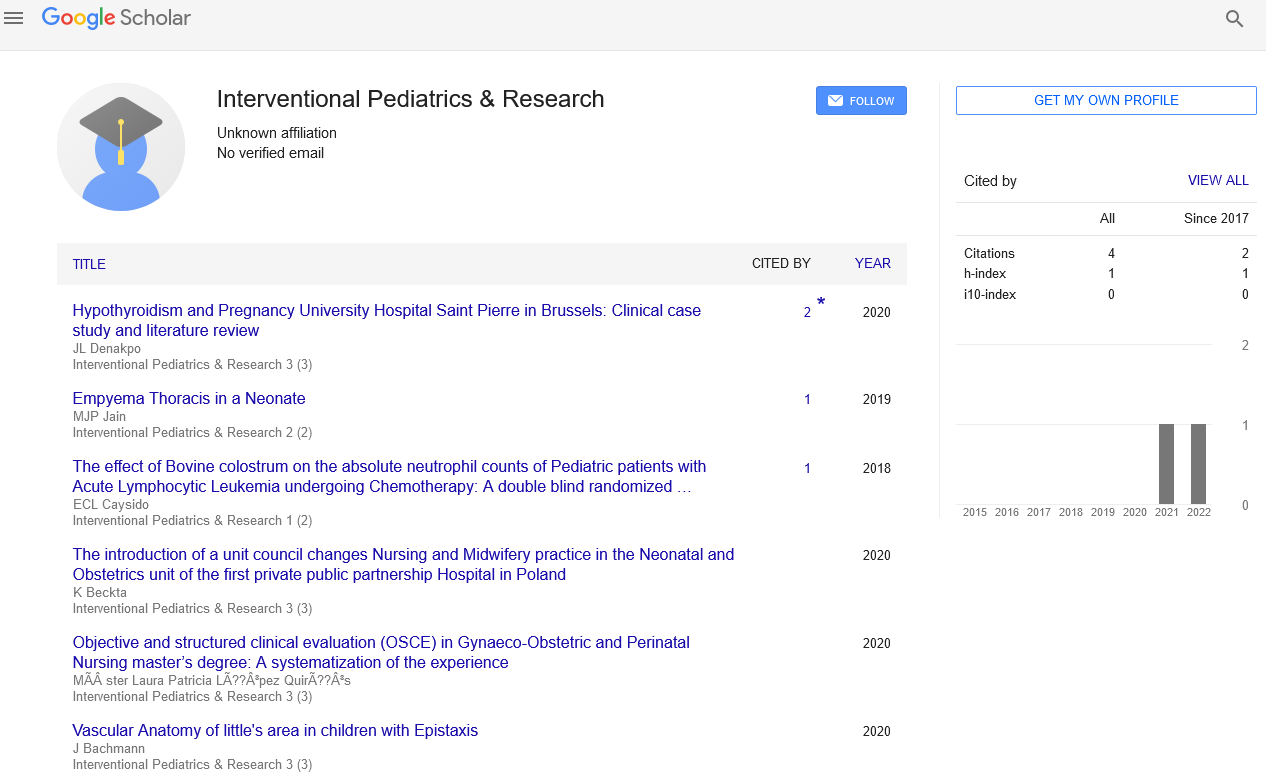Editorial - Interventional Pediatrics & Research (2025) Volume 8, Issue 1
Pediatric Interventional Cardiology: Innovations and Outcomes
Rohan Mehta*
Department of Pediatric Cardiology, Postgraduate Institute of Medical Education and Research (PGIMER), Chandigarh, India
- *Corresponding Author:
- Rohan Mehta
Department of Pediatric Cardiology, Postgraduate Institute of Medical Education and Research (PGIMER), Chandigarh, India
E-mail: rohan.mehta@pgimer.edu.in
Received: 01-March-2025, Manuscript No. IPDR-25-170177; Editor assigned: 4-March-2025, Pre-QC No. IPDR-25-170177 (PQ); Reviewed: 20-March-2025, QC No IPDR-25-170177; Revised: 26-March-2025, Manuscript No. IPDR-25-170177 (R); Published: 30-March-2025, DOI: 10.37532/ ipdr.2025.8(1).131
Introduction
Congenital heart disease (CHD) affects nearly 8 per 1,000 live births in India, making it one of the most significant pediatric health challenges. Advances in pediatric interventional cardiology have dramatically improved survival and quality of life for affected children. By utilizing catheter-based techniques, physicians can manage structural defects and valvular disorders without open-heart surgery, thus minimizing surgical trauma and reducing mortality [1].
Catheter-Based Approaches
Transcatheter closure of atrial and ventricular septal defects is now a preferred method for suitable cases. Compared with surgical closure, these procedures have shorter hospital stays and excellent long-term outcomes [2]. Similarly, balloon valvuloplasty for pulmonary and aortic stenosis remains a cornerstone of interventional cardiology. These methods are especially beneficial in resource-constrained settings where surgical options may be limited.
Emerging technologies, including bioresorbable stents and hybrid approaches combining surgical and catheter-based interventions, are under active study in India. Such approaches offer potential to further improve outcomes in complex congenital anomalies [3].
Challenges and Future
Radiation safety, device availability tailored to pediatric patients, and the need for trained interventional cardiologists remain pressing challenges. Expanding fellowship programs in pediatric cardiology and greater collaboration with device manufacturers are crucial. Future directions include wider use of 3D imaging and AI-driven diagnostics to personalize interventions [4].
Conclusion
Pediatric interventional cardiology has significantly changed the prognosis for children with congenital heart disease in India. By offering minimally invasive solutions, it has bridged gaps in care and ensured better outcomes for children nationwide.
REFERENCES
- Saxena A. Congenital heart disease in India: a status report. Indian J Pediatr, 2005; 72: 595–598.
- Rao PS. Catheter-based interventions in congenital heart disease: an Indian perspective. Ann Pediatr Cardiol, 2011; 4: 95–103.
- Shrivastava S. Advances in pediatric cardiology. Indian Heart J, 2014; 66: 498–503.
- Iyer KS. Training in pediatric cardiology in India. Ann Pediatr Cardiol, 2019; 12: 201–205.
- Mehta AV. Pediatric heart disease and interventional therapy. Indian Pediatr, 2016; 53: 687–692.


